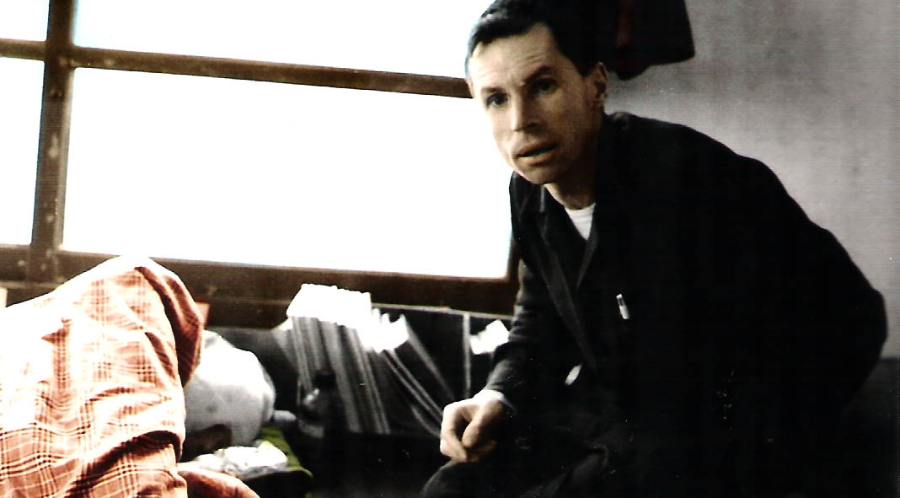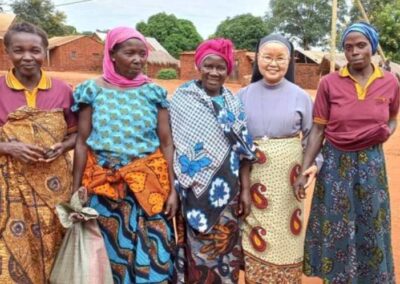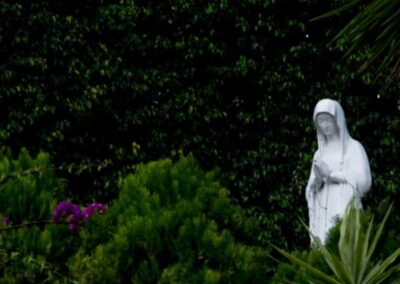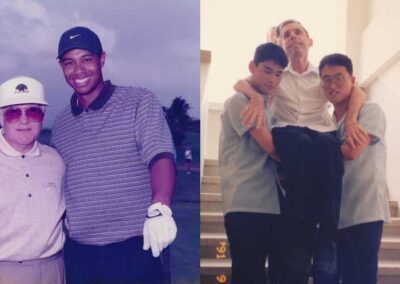To understand the missionary heart of Venerable Aloysius Schwartz, one should come to know of the Belgian who helped to inflame it – Chinese missionary, Fr. Vincent Lebbe.
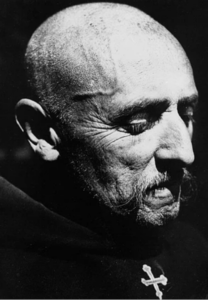
Fr. Lebbe
“Lebbe stories” had been passed like cups of sugar from one neighbor down to the next within the Samist community in Louvain, Belgium where Fr. Al began his studies in 1952. To the young American seminarian, the stories were sacred heirlooms. He had listened to dozens of them during his five years at what would later be renamed the Vincent Lebbe Center at Catholic University in Louvain. There wasn’t a single seminarian who didn’t hold up Lebbe as a sort of untamed paragon – a holy man who’d walk a mile in his cassock just to pick a fight with a Communist bad-mouthing God.
The witnesses of his aunt, Sr. Melfrieda, the Maryknoll missionary Fr. Patrick Byrne, Abbé Duggot of Bauduen, Belgium, and the hardy men from the ragpicker’s community in Paris helped light the torch for Fr. Al’s missionary path – but it was what he gathered from Lebbe (the second “e” is silent) that helped to structure, form, and order it.
So who was Lebbe? For starters, he had a barrel chest and a thick horseshoe mustache that flared out when he shook with laughter, which was often. He shaved his head bald and although he possessed what seemed a deep interior peace, he had a fierceness in his gaze that spoke of something untamed. He had a set of eyes that made folks take a step back. After commanding the native Chinese language, Mandarin seemed to roll off his tongue with swagger and grace. He was uncompromising in proclaiming the Gospel; he feared nothing and no one. He journeyed deep into Chinese mountain ranges to soothe the souls of Catholic peasants, who were terrified of another Boxer Rebellion uprising. But he also managed to win over pagan Communist generals and the Chinese soldiers he eventually served alongside in war with the Japanese. While tending to the war-wounded in the Battle of Rehe, soldiers began to refer to Lebbe as the “old fighter.” They once watched the Belgian priest race up to a Japanese bomb and kick it from harm’s way.
Fr. Al saw in Lebbe a crossbreed between a stronghold for the oppressed and of a revolutionary fighter unafraid of being hanged for proclaiming Christ. While catechizing the Chinese people, he began to see that peasants hungered for native-born bishops to shepherd them. Lebbe eventually became convicted by a single notion; it would only be until the Chinese saw the witness of their own clergy’s blood in the face of the Communist system – not the flow from a European missionary who didn’t speak, act, or resemble them – that Catholicism would begin to root itself to the land and spread throughout China. Fellow missionaries told Lebbe a native-born hierarchy was an impossibility, but Lebbe was intractable in his fight for the Chinese people. He began to lobby the Vatican and started a long crusade for an indigenized Chinese hierarchy. After some time, as was his custom, Lebbe got his way. It is due to the Belgian missionary that the first six Chinese bishops were installed by Pope Pius XI in 1926.
He didn’t set out to be a reformer when he departed Belgium for the Far East on a cold winter day to die for God. It marked a time in history where it was likely to happen. When his ship docked on the Chinese mainland, 30,000 Chinese Catholic peasants, many dozens of priests, and countless Christian missionaries had just been massacred in the Boxer Rebellion, an anti-Christian revolution whose embers were still being stamped out. For Lebbe, though dying for God, was just part of the job requirement; martyrdom had been percolating in his mind since he was an 11-year-old boy.
His uncommon desire came to the surface on a summer day with his mother, Louise, in the Flemish countryside village of Ypres. “Freddy” as he was called then, became gripped by a book on the life of Blessed Jean Gabriel Perboyre, a 19-century Vincentian martyred in China. At some point that afternoon, Lebbe set the book down and approached his mother, who had been sharing a leisurely conversation with a nun at her convent. “I am going to be a Vincentian and go to China to be martyred.” Right then, aware of her son’s rare constitution, Louise accepted it as his fate.
While crossing the Red Sea to enter China for the first time, Fr. Lebbe changed his name to “Lei-Ming-Yuan” to unite with a people he didn’t yet know but already loved. Translated, his name meant, “The thunder that sings in the distance.” Within a short period, millions throughout mainland China would know the name. He became a giant, igniting one of the most wide-spread and prodigious Catholic reformations in centuries.
Each disciple of Christ, Lebbe thought, should be one who fell asleep not knowing if the next day might lead to his martyrdom. His fellow Lazarists missionaries, priests – and even the new Chinese Catholics he had led to conversion – began to see his zeal for Christ as something primitive, something resembling the apostles from the early Church. Before long, most around him held him in awe.
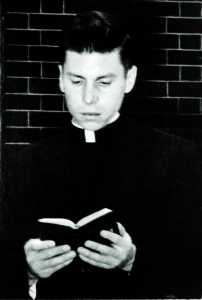
Fr. Al as a young seminarian.
Fr. Al was a 10-year-old boy when Lebbe was captured by Chinese Communists and tortured. His captors attempted to brainwash him; a successful tactic used to break the Christain spirit. They got nowhere with Lebbe, who after weeks of abuse they threw onto the streets, halfway dead. As he lay dying in a hospital bed, squadrons of Japanese planes were dropping bombs outside his window. Because he had always managed to carry within him mirth similar to G.K. Chesterton’s, Lebbe looked at himself and declared through the air raid, “I’m…now. Absolutely Chinese!” satisfied at being so united with the people he loved.
Due to its respect for his uncompromising manner to spread Catholicism, the Chinese government, inexplicably, flew flags at half-mast in the days following his death. In the realm of the invisible, when Lebbe died, the mystique of poverty was transferred from one heroic missionary to a boy who that very year was moving toward a desire for the priesthood as a seventh-grader at Holy Name in Washington, D.C.


